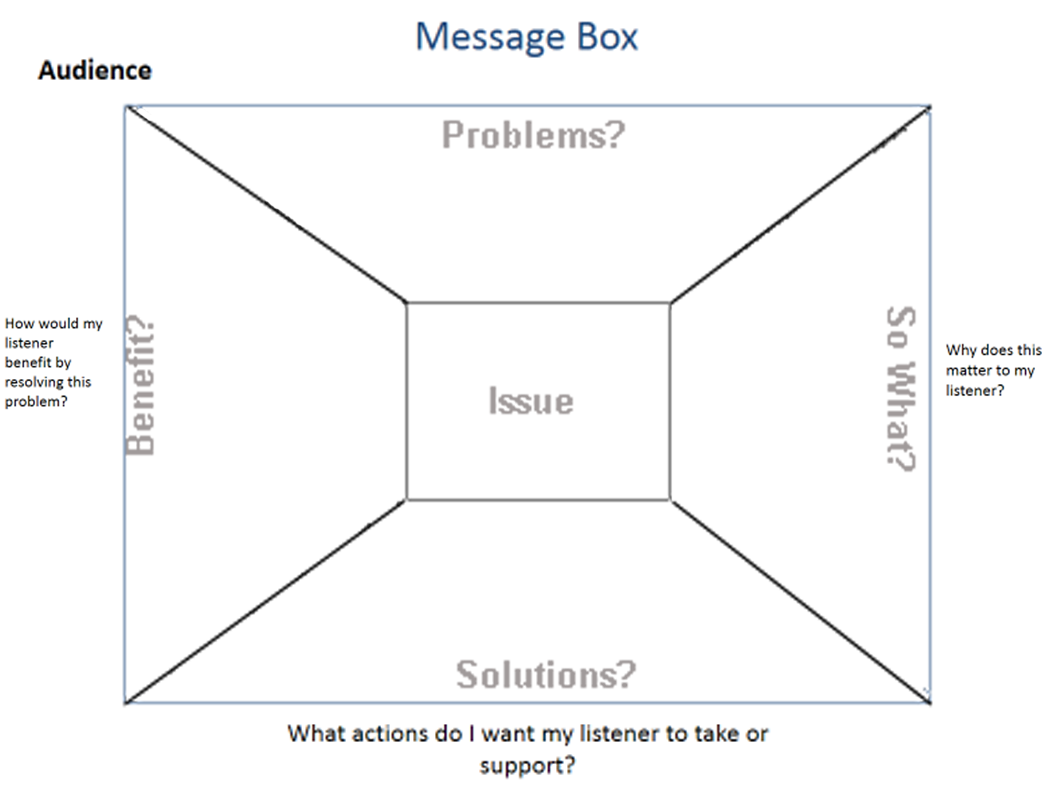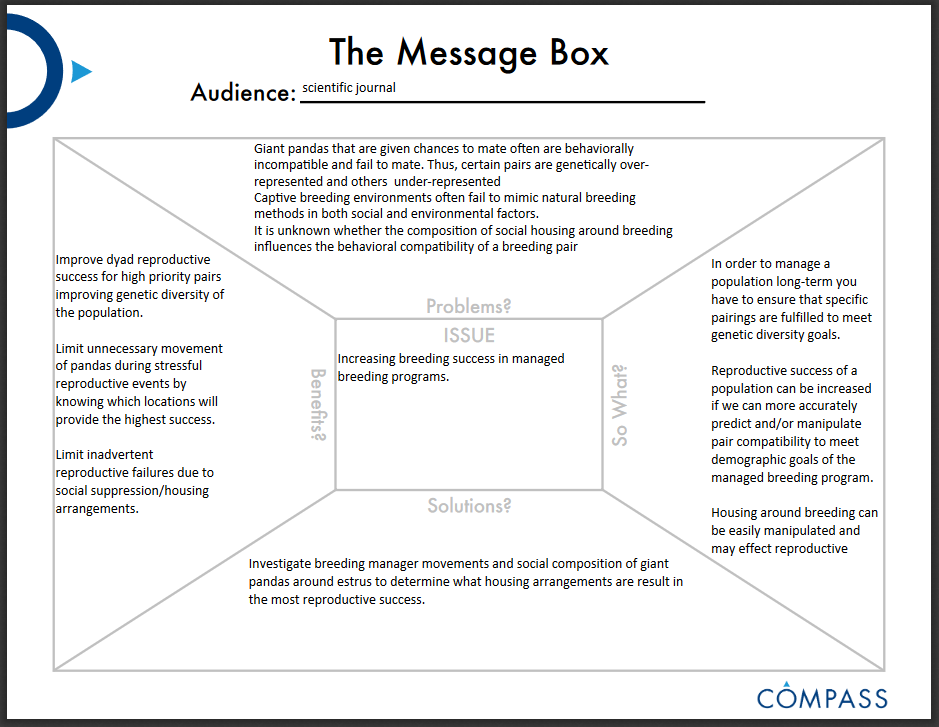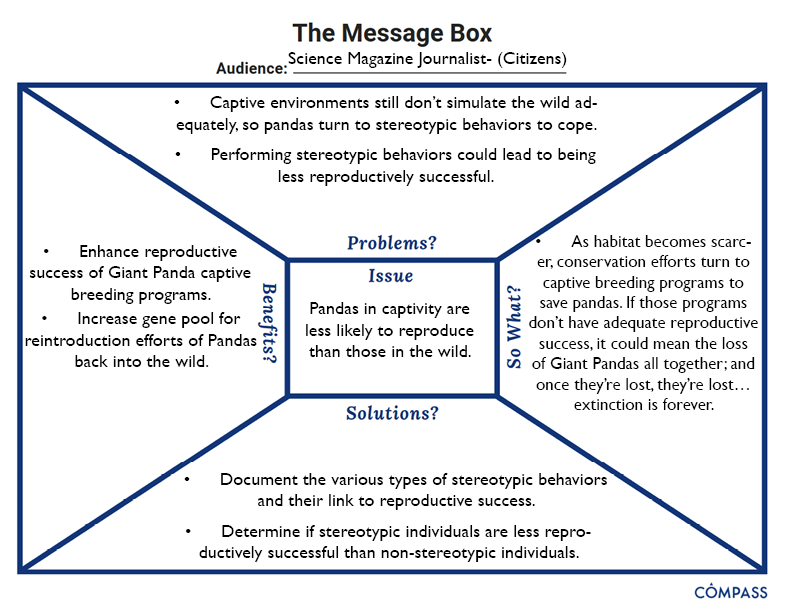A Communication Conundrum!
We scientists, at the moment, have a bit of a communication conundrum. The way scientists and researchers are taught to convey information is actually completely opposite everybody else, so it can make sharing our science quite tricky!
How do Scientists Communicate?
Scientists spend years honing their works for write-ups and publications following a fairly simple method: background, methods, data, then…..finally, you’ll make it to the results section…seven pages in!
Let’s say you discovered that feeding squirrels Pop-Tarts makes them sing...I can guarantee you’re not going to give your friend the history of squirrel diets before you tell him you have a whole squirrel choir going nuts in your backyard!
People want the
“WHY should I care?” FIRST!
How can we Fix it?
COMPASS, a nonprofit organization aimed at enabling scientists with skills to effectively communicate science, developed a diagram to help us do just that!
Enter: The Message Box

What is the Message Box?
COMPASS provides an in depth tutorial on how to generate your own message box, but we’ll give a brief overview of it here.
Essentially, the message box helps us distill down a HUGE amount of information into effective, digestible points. It helps us explain what we’re doing, and why it matters to a specific audience.
Step 1: Pick your Audience
Selecting a specific audience is critical to creating an effective message box. Obviously, if you’re trying to explain panda mate choice to third graders, you’ll have a very different message box than if you’re speaking at a University symposium. This goes for all varieties of audiences as well. In science, you’ll often find yourself needing to convey your message to not only other scientists, but, policy makers, donors, citizens, and especially, the media.
Step 2: Determine your Issue
Depending on how broad or specific your research is, you may need to take a step back or delve a little deeper to discover what the main issue is you’re trying to convey with your work. More often than not, you’ll need to broaden your thinking to find the main issue for your research.
Step 3: Build your Box
The message box divides your issue into four main sections:
Problem: This is typically where you get a little more specific, and define exactly what it is your research is answering and how it fits into the bigger picture (ie…your “Issue”)
Benefits: This is the space you pose the benefits that could ensue if your solutions are completed. Being specific here can be extremely helpful, as providing exact people, places, or companies that could benefit would be quite enticing to most audiences.
Solutions: Here you can pose several solutions to your problem. In the case of research, you’ll often be in the “needs more research” predicament…so try to get as specific as you can! What sort of research is needed, why would this be of interest to your audience?
So What: This is where selecting your audience really matters. You’ll have plenty of “So What’s”, but you’ll need to select the one that will truly catch the eyes and ears of the people you want.

Using the Message Box
Here’s an example of a message box we generated for Giant Panda mate choice research.
Audience: Scientific Journal — Knowing this, we can be a little more specific with the terminology.

From here, we could begin to construct a scientific publication that’s aimed specifically at the scientific community.
Message Boxes aren’t only for Publications
If we wanted to convey some of our research on, say, stereotypic behaviors to a science magazine journalist, we may want to consider taming down the “specifics” a little and making the content a little easier to digest.
A message box for our current Stereotype research with reproductive success might look like:

Our stereotypic research is ongoing, particularly with our Citizen Science projects…. special shout out to our Pacing Pandas Team! Thank you guys for keeping science alive even amidst a pandemic!
We’re currently in the process of publishing a few projects, and you can bet we’ve been using the message box to help us organize our thoughts first! So, be on the lookout for some new research from PDXWildlife!
Did You Know?
It can cost up to $5200 to publish your research?
We can always use your support to help get our science out there!
PDX Wildlife Team

